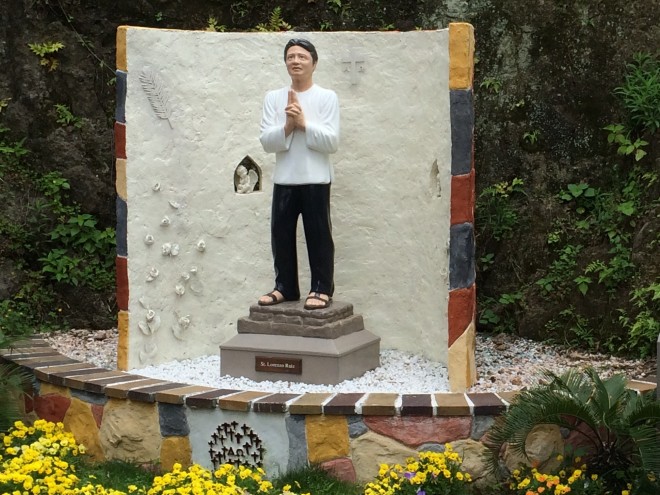
It was astounding to hear that the first Filipino saint, Lorenzo Ruiz, is revered like a rock star in Japan, particularly in Nagasaki, where he was martyred in 1637 at the height of the Tokugawa Shogunate’s persecution of Christians.
Miyata Kazuo, a staffer at the 26 Martyrs Museum in Nagasaki, which is near the site where Ruiz was executed, said that Japanese Catholics revere Ruiz for his unwavering faith amid harrowing torture.
“The Philippines is so fortunate to have San Lorenzo Ruiz as a saint,” gushed Kazuo. “You should be proud of him.”
Kazuo gave an absorbing annotation of the documents, relics and images in the museum, pointing out the strength of the faith of Japanese Christians, during and after their persecution, in medieval times.
Thus began an uplifting experience of rediscovering my Catholic faith in this tour organized by the PTAA (Philippine Travel Agencies Association), which is helping promote Nagasaki as pilgrimage destination for Filipino tourists.
I’ve actually joined a similar trip two years ago organized by the Japan National Tourism Organization. But the PTAA itinerary is different in that it includes more churches and the illuminating visit to the 26 Martyrs Museum.
We had precious moments of reflection spent at Urakami Cathedral (or St. Mary’s Cathedral) located 500 meters from the epicenter of the atomic bombing of Nagasaki; Magome Catholic Church, also in Nagasaki; St. Francis Xavier Memorial Church in Hirado; Oura Church (the oldest in Japan, built to honor the 26 Martyrs); and the chapel inside the 26 Martyrs Museum. I was happy to learn that there are 136 Catholic churches in Nagasaki alone.
Natural beauty
And if St. Francis Xavier and other Jesuits should be given credit for initiating in 1549 the mission to evangelize Japan, our very own San Lorenzo Ruiz deserves recognition for serving the Church in Okinawa in 1636 until he was arrested and thrown into prison in Nagasaki.
Nagasaki itself is a wonderful place, its natural beauty preserved through the centuries, and the scars of World War II—on exhibit at the Atomic Bomb Museum—a mute reminder of the horrifying consequences of human conflict.
Tucked in this spiritual journey are other interesting landmarks: Nagasaki’s own Chinatown where I found a sturdy Japanese-style umbrella; Glover Garden, a park built for Thomas Blake Glover, a Scottish merchant who contributed to the modernization of Japan in shipbuilding, coal mining and other fields; Huis Ten Bosch, a theme park which recreates the Netherlands in real-size copies of old Dutch buildings and surroundings; a boat cruise around the fascinating sea-eroded Nanatsugama Caves; and Dazaifu Tenman-gu, a Shinto shrine in Fukuoka not far from Nagasaki.
An overnight stay at the Karatsu Nagino Oto, a beachfront hotel, gave me the chance to sleep in a traditional Japanese bedroom while wearing a yukata, the casual kimono for summer, and wake up to an authentic Japanese breakfast of pickled seafood and veggies in 26 bowls.